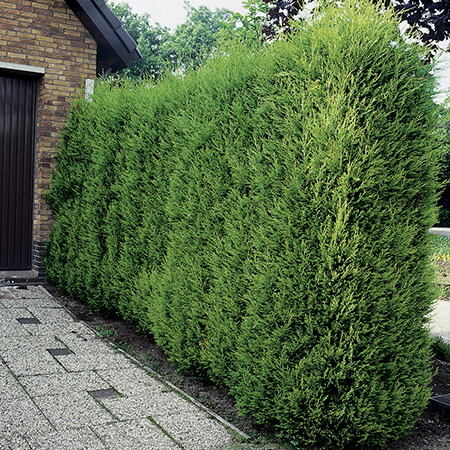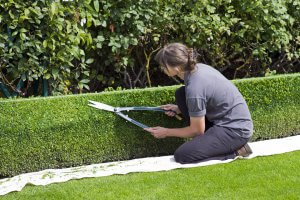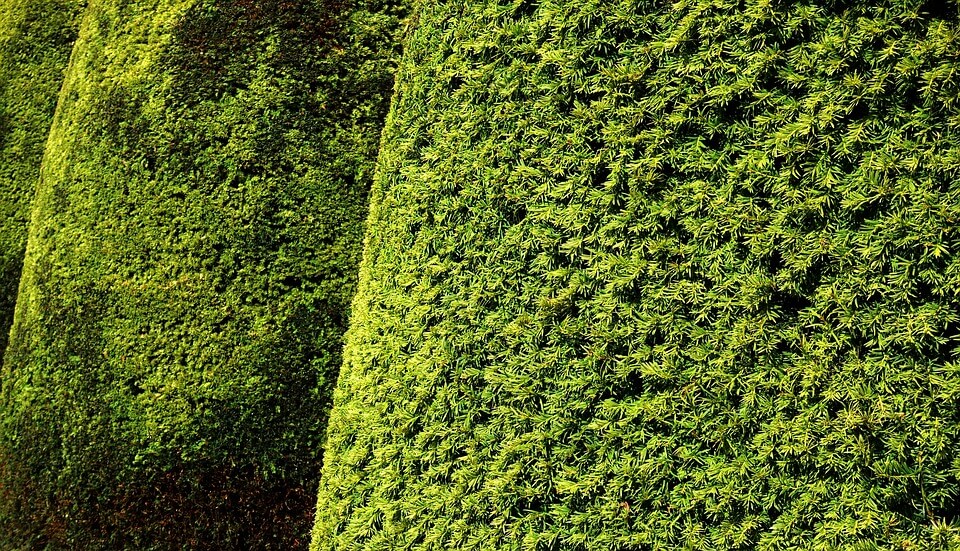There’s more to hedging than a home for birds and straightforward greenery privacy. Read on for some of the key hedging questions, and more importantly their answers!
When is the best time to plant a hedge?
If you are planting an evergreen hedge the best time to plant is early autumn; if, however, you are planting a deciduous hedge the best time to plant is late autumn to late winter. Ensure that the ground is well prepared and is neither frozen nor waterlogged.
What is the fastest growing hedge?
Leyland Cypress ‘Leylandii’ hedges grows up to a meter every year but can be kept to any height given that it is trimmed once or twice a year. Cherry Laurel, Bamboo or Red Berberis are also fast growing hedges which also have unique aesthetics offering a range of beautiful screening.
How far apart do you plant a hedge?
How far you need to plant a hedge depends on the variety and ranges from 30cm (Privet) to 60cm (Leylandii) a part. To plant a double staggered row establish two parallel lines 30-50cm apart and then plant to the required distance for your chosen variety for an incredibly thick and healthy looking hedge.
What are the best hedges for screening?
The best hedges for screening which ensure the most privacy are all typically evergreen hedges; leylandii is a fantastic, fast-growing hedge that will give you splendid coverage in no time. Yew is also a classic and charming hedge for screening and although it isn’t as fast growing as the leylandii it is shade tolerant and will do extremely well in north-facing positions. The Common Holly ‘Ilex aquifolium’ is a splendid hedge for privacy with thick, vigorous growth remaining a beautiful shade of dark, gloss-green throughout the year also doubling up as an effective intruder deterrent.

What are the best hedges for front gardens?
There are a range of fantastic hedging plants for the front garden; Box (Buxus sempervirens) will form a brilliant neat small hedge to line path- and driveways while Yew will give you a more substantial hedge that can protect your home from roadside pollutants. Lavender also makes a wonderful, if unique hedge with the notorious purple flowers and rich fragrance.

What is the best hedge for a small garden?
The best hedges for smaller gardens are privet or osmanthus delavayii – two incredible hedges which grow thick and luscious in minimal amounts of space. Equally bamboos are a brilliant feature in the garden which also add an Asiatic charm to your garden.
What is the best hedge for wildlife?
For wildlife the best varieties of hedging plants are native species such as beeck, blackthorn, holly and hawthorn, all of which providing welcome shelter and food to our native animals. You can grow a wildlife hedge which consists of several of these native species in a single hedge with hawthorn being used as the base comprising around 60% of the hedge.
What is the best hedge?
The best hedge all depends entirely on what you want from your hedge; Box makes a brilliant neat little hedge to border pathways while leylandii is a spectacularly fast-growing evergreen sure to give you ample screening. Equally there are flowering hedges such as Rhododendron or Lavender or fantastic native species including hawthorn and beech. Which hedging plant is the best depends on your vision for your outdoor space, as there’s such to be the perfect hedge to meet your needs.

–
Liam works in the buying team at Primrose. He is passionate about studying other cultures, especially their history. A lover of sports his favourite pastime is football, either playing or watching it! In the garden Liam is particularly interested in growing your own food.